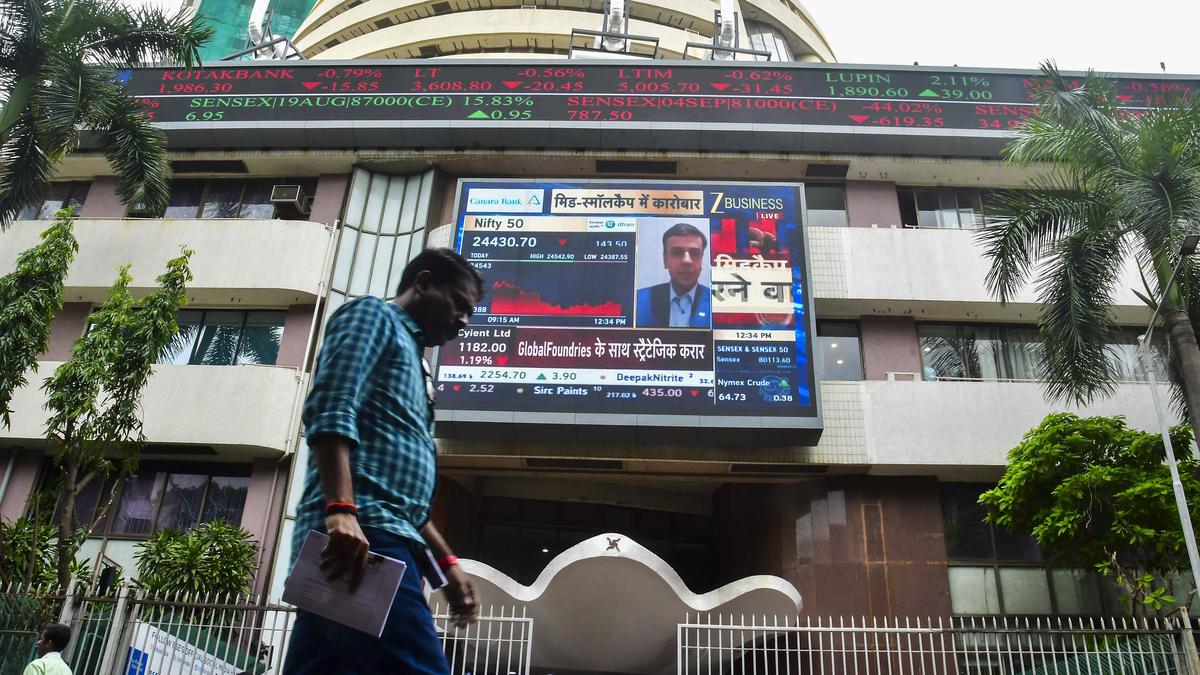
Image used for representational purposes.
| Photo Credit: Getty Images/iStockphoto
Small Savings Schemes, also known as Post Office Savings Schemes, are useful for channelising savings. Interest rates are set by the government quarterly. For the current quarter, the rates remain unchanged. This means it is beneficial to investors. Here’s how.
Basis for fixing rates
The interest rate on Small Savings Schemes will be aligned with Government Security (G-Sec) rates of similar maturity with a spread i.e. mark-up. For example, the spread on Senior Citizens Savings Scheme will be 1% over comparable maturity G-Secs. The rationale for linking it to G-Sec yields in the secondary market is it is in line with interest rate movements in the economy and the market.
Let us say benchmark G-Sec rate is X% and the mark-up as per the formula is Y%. Then the rate must be X% plus Y%. However, if the rate is higher, say X% plus Y% plus Z%, then Z represents the generosity of the Government for citizens’ benefit. The rates are reviewed every quarter, but not revised downward every quarter even when G-Sec rates are sliding.

Current rates
• Post Office Savings Deposit rate is at 4%.
• Public Provident Fund (PPF) is supposed to have a mark-up spread of 25 basis points (100 bps = 1%). The relevant G-Sec rate, which is the average of G-Sec of corresponding maturity from June-August 2025, relevant for the October- December 2025 quarter, was 6.58%. By this logic, the PPF rate should have been (6.58 + 0.25=) 6.83% but it is 7.1%. Hence 27 bps (0.27%) is ‘Z’ component.
• Post Office Term deposits of 1, 2 and 3-year maturity are to be at the corresponding G-Sec rate, without any mark-up spread. For 5-year term deposits, the mark-up spread is 25 bps. The maintained rates are much higher. The ‘higher’ yield or the ‘Z, is as much as 1.44% in 1 year term deposits. The rate offered is 6.9% for 1 year.
• Kisan Vikas Patra (KVP) is at zero spread; with reference point at 6.58% and rate at 7.5%, the additional interest over formula is 0.92%.
• For NSC VIII Issue, which is at a mark-up of 25 bps, the formula rate is 6.51%. At 7.7%, the additional interest is 1.19%.
• Senior Citizen Savings Scheme (SCSS) has the highest mark-up spread of 1% over reference G-Sec yield, as social benevolence for seniors, who may not have active income. At the reference G-Sec yield of 6.12%, the formula rate is 7.12%. The rate on offer is 8.2% or an additional interest (Z) of 1.08%.
• Sukanya Samriddhi Account Scheme, which has the longest tenure of 21 years. The formula mark-up is 75 bps. The reference G-Sec yield is 6.58%. Against the formula rate of 7.33%, the rate is 8.2%. The additional interest the girl child would get this quarter is 0.87%.
Liquidity
For any investment, you must consider its liquidity. For Small Savings (Post Office) Schemes, rates are attractive and credit quality top grade as it is run by the government. The only other variable is liquidity. You can refer to the website <https://www.indiapost.gov.in/banking-services/saving> for details.
As an example, National Savings Certificate VIII Issue cannot be closed prematurely before the 5- year term except under extreme circumstances. Same is the case for Kisan Vikas Patra. Time deposits can be closed prematurely at lower rates.
Market movement
The Reserve Bank of India has reduced the reference repo rate. Earlier it was 6.5% now it is 5.5%. There is a possibility, though on the lower side, of one more rate cut of 25 bps (0.25%). This expectation is driven by low inflation. Usually, G-Sec yields in the secondary market move in consonance with RBI’s interest rate steps. However, over the past four to five months, G-Sec yields inched up as the market is looking at the end of the current RBI rate cut cycle.
The implication is, the reference G-Sec yield levels mentioned earlier would be same or little higher for the next quarter. Hence the probability of Small Savings interest rates dipping going forward is low.
Conclusion
There is a ‘generosity component’ or ‘Z’ in the currently prevailing Small Savings rates. It is likely these rates would be maintained going forward. From the safety aspect, arguably, it is even safer than bank deposits as Small Savings Schemes are run by the government. You may compare the rates you get from the bank. You should compare the rates with a high-grade bank as it should be a like-to-like comparison. Only aspect to be taken care of is liquidity in the particular Small Savings Scheme you are looking at.
(Joydeep Sen is a corporate trainer (financial markets) and author)
Published – October 20, 2025 12:15 am IST


